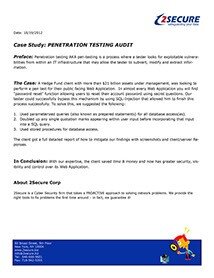PENETRATION TESTING COMPANY NYC
What Is A Penetration Test?
Penetration testing AKA pen-testing or pen test is a process where a tester looks for exploitable vulnerabilities from within an IT infrastructure that may allow the tester to subvert, modify, and extract information.
Penetration tests are typically performed using manual or automated technologies to systematically compromise servers, endpoints, web applications, wireless networks, network devices, mobile devices, and other potential points of exposure.
The process typically includes the following steps: make sure to add a picture and have the structure as we did with common issues on the home page.
Planning and Reconnaissance
The first stage involves defining the scope and goals of a test, including the systems to be addressed and the testing methods to be used. Then, gather intelligence (e.g., network and domain names, mail servers) to better understand how the target works and its potential vulnerabilities.
Gaining Access
This stage uses web application attacks, such as cross-site scripting, SQL injection, and backdoors, to uncover a target’s vulnerabilities. The goal is to exploit a vulnerability identified in the previous stage, to see if unauthorized access to the system can be achieved.
Analysis
Finally, the results are compiled into a report detailing what was found, the exploitable vulnerabilities, the sensitive data accessed, and how long the pen tester was able to remain in the system undetected.
Scanning
The next step is to understand how the target application or system responds to various intrusion attempts. This is typically done using static analysis (inspecting an application’s code) and dynamic analysis (inspecting an application’s code while it’s running).
Maintaining Access
The goal of this stage is to see if the vulnerability can be used to achieve a persistent presence in the exploited system—long enough for a bad actor to gain in-depth access, indicating a real-world breach. This would allow the tester to imitate advanced persistent threats, which often remain in a system for months in order to steal an organization’s most sensitive data.
This information is then used to design a more effective security strategy, prioritize remediation, apply targeted patches, and improve overall security awareness.
DELIVERIES
- Managers summary
- Technical summary accompanied by a detailed report with all potential holes and how to mitigate them
- Redesign a secure infrastructure that is efficient and cost-effective in order to reduce the cost of ownership

